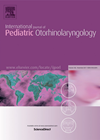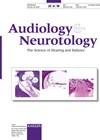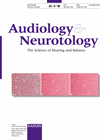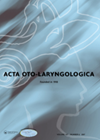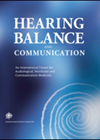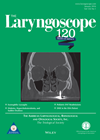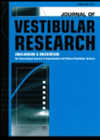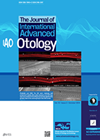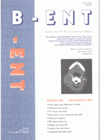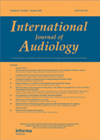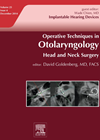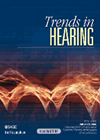
Journal Reviews
Cochlear implantation in asymmetric hearing loss
Criteria for cochlear implantation (CI) is a constant topic of debate. The UK traditionally had relatively restrictive guidance, although this has been greatly improved by more recent guidance released in 2019. Nevertheless, because of the lack of evidence for cost-effectiveness,...
Round window niche drilling with intratympanic for ISSHL. A new option for salvage?
This paper from China compares the technique of widening the round window via a posterior tympanotomy approach and steroid-soaked gelatin sponge with intratympanic steroids alone for salvage therapy in severe idiopathic sensorineural hearing loss. Salvage therapy was defined as patients...
Is there a role for hyperbaric treatment in sudden hearing loss?
Sudden sensorineural hearing loss is a common presentation to ENT departments with a significant difference in management both at a local and regional level. The authors seek to clarify the role of hyperbaric oxygen therapy in combination with oral and...
Should intratympanic steroids be the first line treatment for sudden sensorineural hearing loss?
This article looked at whether intratympanic steroids (ITS) provide more benefits over systemic steroid therapy (SST) as initial therapy in patients with idiopathic sudden sensorineural hearing loss (ISSHL). This meta-analysis study, based on published RCTs, concluded that ITS treatment exhibited...
Cochlear microphonics in children
Cochlear microphonics (CM) are generated mainly from outer hair cells and are routinely tested in children with hearing loss in some parts of the world. In this retrospective study, the aim was to compare the cochlear microphonics features (mainly CM...
Recovery rates in sudden sensorineural hearing loss
Sudden sensorineural hearing loss (SSNHL) is most commonly idiopathic, and is seen relatively frequently in ENT practice. Recovery spans a period of around 1-2 months, and ultimate outcomes are highly variable, from complete recovery to no detectable hearing. Although the...
New diagnostic criteria for Ménière’s disease – an international consensus
Most readers are familiar with the American Academy diagnostic criteria for Ménière’s disease (MD) but a significant minority will be aware of other criteria from Japan and Korea. This new effort is a collaboration between these three bodies and the...
Leptin has no role in idiopathic sudden sensorineural hearing loss
This paper from Turkey claims to be the first study dealing with the relationship between leptin and idiopathic sudden sensorineural hearing loss (ISSHL). I remember leptin being a fashionable topic in obesity research, when leptin deficiency was thought to be...
Cochlear implantation in Ménière’s disease
This was a Belgian retrospective study of seven patients with Ménière’s disease who underwent cochlear implantation. All patients had bilateral severe to profound hearing loss and all met AAO-HNS criteria for Ménière’s disease. Follow-up for patients ranged from six months...
Frequency Compression – is there a benefit?
The goal of this study was to investigate whether frequency compression (FC) hearing aids provide more benefit than conventional hearing aids. Twelve experienced hearing aid users 65-84 years of age with moderate to severe high frequency hearing loss wore the...
Cochlear implantation techniques
This issue concentrates on the advancement in techniques within the field of implant otology starting with cochlear implantation. Here it is sub-divided into indications, candidacy (including full pre-operative testing and investigations), surgical technique and outcomes for both adults and children....
Viral induced hearing loss
Viruses are a common cause of hearing loss both in children and adults. This article provides a good review of the viral causes of hearing loss and can be regarded as an essential read. The authors divide the viruses into...

